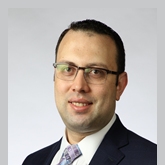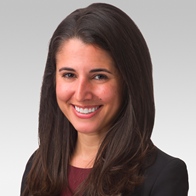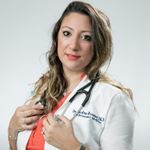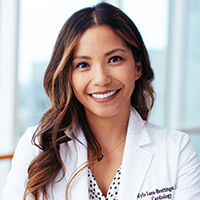AHA FIT Newsletter
Table of Contents
Welcome from Dr. Lloyd-Jones
Welcome to the AHA’s FIT newsletter!
I am so excited to know that this group is thriving and engaging our vital youngest volunteers. Being a member of AHA can be, and will be if you let it, a major driver of your career success and a constant touchstone for your scientific and clinical work. After giving my first scientific oral presentation at AHA Sessions, I joined AHA when I was a FIT, and the opportunities that simple act has provided me have shaped my scientific interests, led to lifelong friendships, generated collaborations, dramatically altered my career, and fueled my passion for advocacy, both for our patients and for population health. AHA has such an incredible scope and impact, there truly is something here for everyone, and especially you if you want to engage as a volunteer.
How can you get involved? There are so many ways and entry points. For example, right here is a great place to start: the FIT community is embedded in so much of what we do, from blogging throughout the year to helping us organize Scientific Sessions, to being some of our most passionate advocates on local and national issues that affect our patients and our communities. AHA funds far more young investigators than any other group – you should apply to get your ideas funded and join the AHA research community, which might include the experience of attending the AHA Research Leaders’ Academy. Through your Council, you can volunteer for Council-based or National AHA committees; connecting with the Early Career Committee in your Council is often a great way to network for these opportunities. And don’t forget that AHA has numerous layers of activity. In our five national regions and our numerous local affiliates (there’s probably one in your city), you can see how the incredible rubber of AHA’s policies and programs meets the road in our schools, communities, and health care systems. It’s a view of AHA too many of us don’t get to see and yet it is where so many important opportunities lie and where real differences can be made. You can be a catalyst and advocate for these programs in your city and state.
Remember: you are our future! You keep us honest about the important issues of the day, including on issues of science, clinical care, equity, disparities, and so much more. We depend on you for your incredible ideas, your innovative solutions, and your passionate dedication to being a relentless force for a world of longer, healthier lives. So please reach out through this amazing FIT group and through your Council, volunteer for committees, or contact your local affiliate in your city. I promise your time will be well spent and the rewards will be remarkable. Welcome aboard!
Donald Lloyd-Jones, MD, ScM, FAHA
AHA President-Elect
The American Heart Association (AHA) Annual Scientific Sessions meeting in 2020 was certainly a departure from the prior years’ in-person meetings. However, the transition to the virtual platform did not hamper the excitement and enthusiasm surrounding the AHA Fellows in training (FIT) and Early Career (EC) Lounge.
The AHA EC/FIT Lounge brought forward live fireside chats on Zoom, simulive recorded sessions, and pre-recorded online conversations on topics ranging from careers in cardiovascular medicine to research writing and from important topics of equity in medicine to wellness for trainees.
Here, we discuss the behind-the-scenes planning and the challenges in executing a completely virtual program as well as what to expect for the future of the Scientific Sessions EC/FIT Lounge programming with the FIT Lounge Sessions Planning Committee Chairs; Nosheen Reza, MD and Jeff Hsu, MD, PhD.
Icosapent Ethyl: Can it Reduce Cardiovascular Disease until it Evaporates?

Suvasini Lakshmanan, MD, MS
Advanced Cardiac Imaging Fellow
Lundquist Institute at Harbor-UCLA
@SuvasiniL
In the landmark trial REDUCE-IT (Reduction of Cardiovascular Events with EPA —Intervention Trial), initial atherosclerotic cardiovascular disease (ASCVD) events were reduced by 25% and total cardiovascular (CV) events by 32%, however, the true mechanism of benefit of icosapent ethyl (IPE) was not fully characterized. IPE is a highly purified ethyl ester of eicosapentaenoic acid (EPA), and is demonstrated to have beneficial effects on lipid oxidation, cell membrane stabilization, and plaque progression. As such, the EVAPORATE trial sought to examine the anti-atherosclerotic effects of IPE (4g/day) as an adjunct to statins in patients with residually elevated triglycerides and angiographic stenosis Cardiac Computed Tomography Angiography (CCTA).
In my moderated poster presentation titled, ‘Achieved Eicosapentaenoic Acid (EPA) levels Predict Regression of Coronary Plaque Volumes by CCTA in the EVAPORATE trial’, we showed that higher serum EPA levels predict regression of prognostically relevant coronary plaque volumes, Total Non Calcified Plaque (TNCP), and Total Plaque (TP) on CCTA, providing important mechanistic insights to the CV benefits of IPE. Achieved EPA levels have been previously established as the key mediator to explain the time to and the substantial degree of CV outcomes benefit from IPE in REDUCE-IT. Our study therefore, highlights the beneficial effects of ‘EPA-based pleiotropy’ on multiple steps along the pathway of coronary atherosclerosis as the mechanistic link to treatment of residual CV risk.
Furthermore, in another abstract titled, ‘Effect of Icosapent Ethyl on Changes in Coronary Plaque Characteristics at 9 months in Patients with Elevated Triglycerides on Statin Therapy: Insights from EVAPORATE’, we examined the effect of icosapent ethyl (IPE) on vulnerable plaque features (Lipid Rich Necrotic Core (LRNC), fibrous cap thickness, and intraplaque hemorrhage (IPH)) on serial CCTA at 9 months, using a novel software validated using histology (vascuCAP). Plaque vulnerability is an important predictor of coronary plaque rupture, a key mechanism of acute CV events. Relative to placebo, patients on IPE demonstrated decreased wall volume (-7.2 vs. +28.4 mm3), decreased LRNC (-1.4 vs. +9.7 mm3), and reduced IPH (-0.02 vs. +0.3 mm3) as well as increased fibrous cap thickness (+100 vs. -290 micron), indicating migration of vulnerable atherosclerotic plaque to a more stable plaque phenotype.
Our studies provide important correlations to clinical trial results (REDUCE-IT) and imaging (EVAPORATE), demonstrating consistent benefits of IPE and serum EPA levels on CV outcomes, plaque progression, and plaque vulnerability.
Finding the Missing Link between Cardiovascular Disease and Preeclampsia

Anum Minhas, MD
Fellow, Cardiovascular Diseases
Johns Hopkins University Hospital
@DrAnumMinhas
Maternal mortality continues to rise in the United States, with hypertensive disorders and cardiovascular diseases among the leading causes. Preeclampsia, defined by hypertension and end-organ dysfunction, is a common adverse pregnancy outcome that occurs in 5-7% of all pregnancies. It increases the risk of both acute and long-term cardiovascular disease, including chronic hypertension, coronary artery disease, stroke and heart failure. While the pathogenesis is not well understood, inflammation and microvascular dysfunction are likely central in the process.
I, along with senior mentors Drs. Arthur (Jason) Vaught, Sammy Zakaria, and Neal Fedarko, presented our recent work presented at the AHA Scientific Sessions in November 2020. We performed a prospective cohort study of women with severe preeclampsia compared to normotensive women. We found that during pregnancy, women with preeclampsia had abnormal echocardiographic parameters, and that several of these parameters, including diastolic dysfunction, were associated with elevated angiotensin II type 1 receptor autoantibody (AT1R-Ab). AT1R-Ab is an agonistic autoantibody resulting in enhanced angiotensin effects, such as vasoconstriction. We used a novel in-house developed antigen capture enzyme-linked immunosorbent assay for measuring antibody levels.
Further, women with preeclampsia had persistently increased antibody levels at four years, and those with higher antibody levels during pregnancy were also significantly more likely to develop new chronic hypertension by four years. These data suggest that the relationship between preeclampsia and cardiovascular disease may be mediated by AT1R autoantibody.
Preeclampsia is a prevalent complication of pregnancy with high cardiovascular morbidity and mortality. It is critical to improve risk stratification and prognostication in this population. AT1R autoantibody may serve as an important biomarker for identifying the highest risk women. My team and I plan to continue to investigate the role of this autoantibody in ongoing basic and translational clinical studies.
Association of Early-Life Trauma and Risk of Adverse Cardiovascular Outcomes in Young and Middle-aged Individuals With a History of Myocardial Infarction

Zakaria Almuwaqqat, MD
Fellow, Cardiovascular Diseases
Emory University Hospital
@zakaria34a
Exposure to psychological stress is an understudied cardiovascular risk factor, particularly among young adults. Young and middle-aged survivors of myocardial infarction (MI), especially women and underrepresented patients, are at risk groups that tend to have a higher burden of psychosocial adversity than other patient groups or individuals from the community. In this study, we found that early life trauma, a highly prevalent childhood stress exposure, is more prevalent among patients with MI as compared to age and sex-matched community-based controls. Moreover, we found that early life adversity was prospectively associated with an increased risk for cardiovascular outcomes in a dose-dependent relationship.
Social determinants of health are increasingly recognized to play a major role in cardiovascular disease development. However, little is known regarding early life adversity as an earlier trigger and a significant predictor in this association. Despite the high prevalence of early life trauma in the community, there are no national recommendations or recognition regarding the need for childhood adversity surveillance in the healthcare system. There is a limited understanding of how to prevent or mitigate adversity and to build resilience in the community. More studies are needed to guide and inform much needed, effective and timely individual and population-level interventions as well as healthcare policies to address this prevalent exposure in the community. Finally, our study highlights an at risk urban population that might benefit from more focused interventions to address inequalities that could have been built-in.
How Did We Do It? Career Pathway to CardioObstetrics
Malamo Countouris1, MD, Agnes Koczo2, MD
1. Clinical Instructor & T-32 Postdoctoral Scholar, Heart and Vascular Institute, University of Pittsburgh, @Malamo512
2. Fellow, Cardiovascular Diseases, University of Pittsburgh Medical Center, @AkoczoAgnes


Pathways: Multiple pathways within cardiology can lead to a career caring for cardio-obstetrics patients or patients with cardiovascular disease in pregnancy. One pathway is via general cardiology with specific focus on training in cardio-obstetrics through continuity clinics and elective rotations. A cardio-obstetrics-trained general cardiologist would see pregnant patients with a wide range of cardiovascular issues in pregnancy including pre-existing cardiovascular conditions such as valvular disease, arrhythmias, and heart failure as well as conditions that develop during pregnancy such as hypertensive disorders of pregnancy. In a heart failure pathway, an advanced heart failure fellowship would provide the training needed to see high-risk pregnant patients with conditions such as pulmonary hypertension or postpartum patients with peripartum cardiomyopathy. A third pathway, through adult congenital heart disease fellowship, would prepare one to manage patients with congenital heart disease during their pregnancy.
Training (Dr. Koczo): There are numerous ways fellows can ensure their training positions them well for a career in cardio-obstetrics. Through the women’s health track in residency, I developed an interest in reducing disparities in cardiovascular care both during and following pregnancy. I gained experience in women’s health related issues through this track and was introduced early to both clinical and research mentors in cardio-obstetrics. General cardiology fellowship has further added to my clinical cardio-obstetrics experiences, where I have my continuity clinic in our women’s heart center and see pregnant and postpartum patients with cardiac problems in pregnancy. I am also able to take inpatient electives at our women’s hospital, primarily seeing high risk cardiac pregnant patients.
A typical day (Dr. Countouris): As a clinician investigator, a large proportion of my time is spent doing research in cardio-obstetrics, specifically studying hypertensive disorders of pregnancy and link with later life cardiovascular disease. From the clinical side, my outpatient clinic is housed in our women’s heart center where I see currently pregnant or recently postpartum patients on each clinic day. Two days a month we have a multidisciplinary postpartum hypertension clinic to specifically care for women who had a hypertensive disorder of pregnancy and are now anywhere from 2 weeks to 1 year postpartum. I also staff inpatient consults at our women’s hospital which includes seeing any pregnant patients with cardiovascular disease admitted peripartum. Once a month, I attend a multidisciplinary meeting with maternal fetal medicine, obstetric anesthesia, and cardiology to coordinate care and discuss management of our highest risk pregnant patients with cardiovascular disease.
We hope we have convinced you that cardio-obstetrics is a fascinating field with the potential for having a major impact in a high-risk group of young women patients. There is still so much to learn in cardio-obstetrics to improve care for these women and a clear need for more rigorous research to advance knowledge in this area!

Sarah Chuzi
Fellow, Cardiovascular Diseases
Northwestern University Feinberg School of Medicine
@ChuziSarah
Dr. Sarah Chuzi, a third year general cardiology fellow at the Northwestern University Feinberg School of Medicine, is the recipient of the 2020 Laennec Fellow in Training (FIT) Clinician Award at the American Heart Association’s Annual Scientific Sessions 2020. The Laennec Award recognizes the importance of clinical acumen, inductive analytic skills, and teaching ability in future academic cardiologists.
American Heart Association FIT: Staying Engaged on a State Level

Author: Sarah Rosanel, MD
Fellow in Training, Maimonides Medical Center in Brooklyn, NY.
Liaison and Moderator for AHA Career Night
@DrRosanel
 American Heart Association’s Cardiovascular Fellows Society of Greater NY Career Night has always been a much anticipated and exciting event for fellows across the tristate area.
This has traditionally been an evening of human connections, dining, and learning from each other. This year was different, with Covid-19’s restrictions, we did not meet in person. Yet, the excitement was still palpable during this virtual “get together”. With over 100 participants, this was our best attendance yet.
American Heart Association’s Cardiovascular Fellows Society of Greater NY Career Night has always been a much anticipated and exciting event for fellows across the tristate area.
This has traditionally been an evening of human connections, dining, and learning from each other. This year was different, with Covid-19’s restrictions, we did not meet in person. Yet, the excitement was still palpable during this virtual “get together”. With over 100 participants, this was our best attendance yet.
An incredible group of panelists represented subspecialties of cardiology including Critical Care, Electrophysiology, General/Private Practice, Heart Failure, Cardiac Imaging and Interventional Cardiology! The career night was about having the chance to “meet” and chat with experts and leaders in their field and insights and career advice.
Dr. Valentin Fuster’s inspirational speech was highly motivating. He reminded the attendees to know the importance of knowing who we truly are, using our strengths and unique talents to become successful. He stressed on the importance of doing what we love the most to be satisfied in our professional career. He also emphasized on the “unity” of cardiology fellows, working together toward the same goal: improving patient’s care. Team effort is primordial and that also includes effective communications between fellows across the different institutions, enjoying each other’s successes. The power of fellows coming together that night despite being in the midst of a pandemic to create this immensely successful virtual Career Night was impressive.

A Career in Preventive Cardiology: It’s A Lot More Than Statins

COVID-19 and Historical Distrust

The Power of Representation
AHA Fellows in Training Newsletter Editorial Team
Editors in Chief:
Anum Saeed, MD
University of Pittsburgh Medical Center, Pittsburgh, PA
Aubrey J Grant, MD
Georgetown University/Medstar Washington Hospital Center, Washington DC
Immediate Past Editor:
Elizabeth H. Dineen, DO
University of California Irvine, Irvine, CA
Senior Advisory Team:
Elizabeth H. Dineen, DO
Jeff Hsu, MD, PhD
Nosheen Reza, MD
AHA Contact:
Eddie Pan